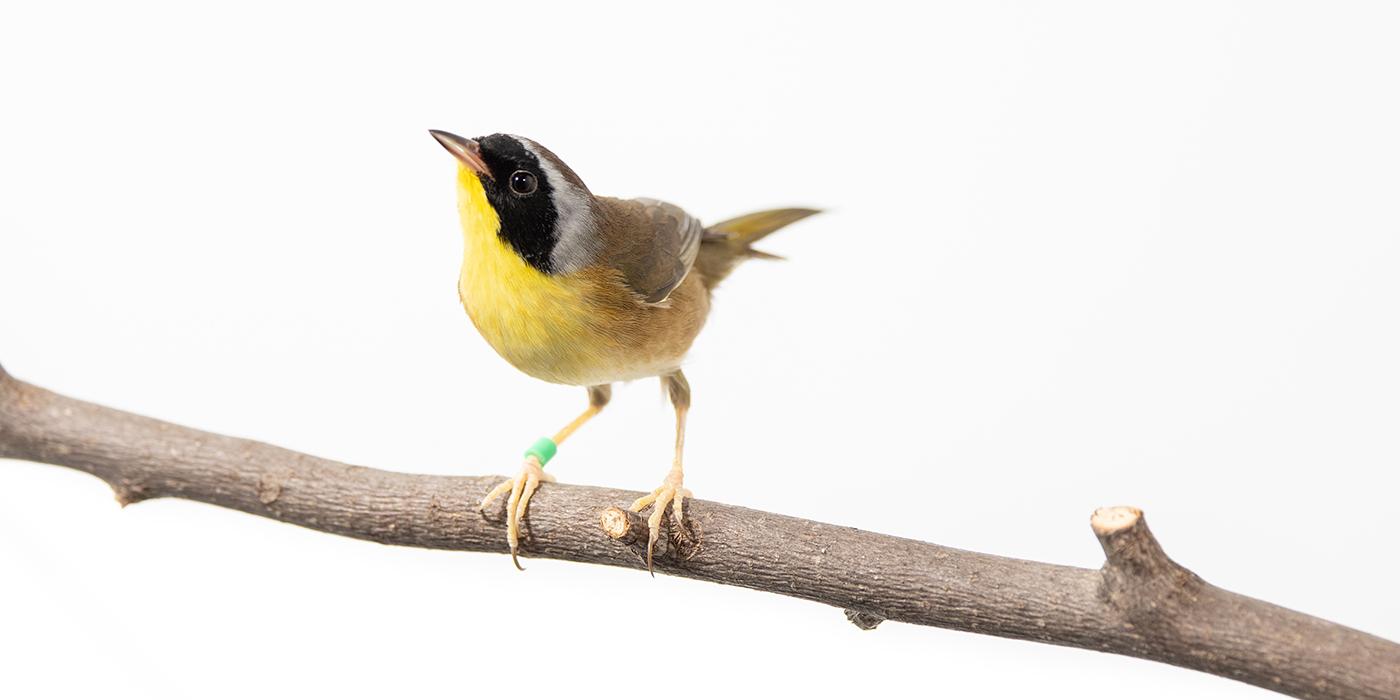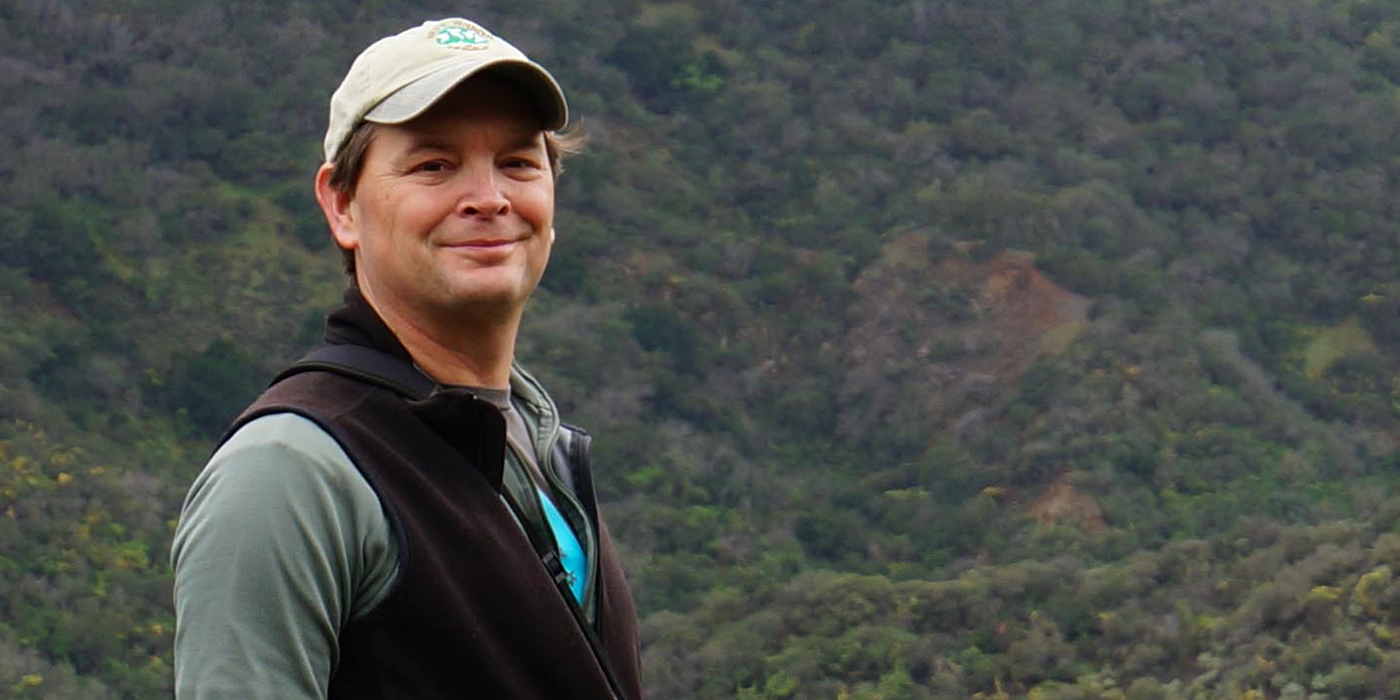Why Migratory Birds are Crazy for Coffee
Migrants and Coffee: What's the Connection?
In the midst of altered and shrinking habitat in both North and Latin America, migratory birds have found a sanctuary in the forest-like environment of traditional coffee plantations. In eastern Chiapas, Mexico, Smithsonian Migratory Bird Center biologists found that traditionally-managed coffee and cacao (chocolate) plantations support over 150 species of birds; a greater number than is found in other agricultural habitats, and exceeded only in undisturbed tropical forest.
Even in very disturbed areas, coffee plantations support good populations of migrants and other species that prefer or are restricted to forest habitats, such as redstarts, black-throated green warblers, yellow-throated and solitary vireos, and residents including tinamous, parrots, trogons, becards, toucans, and woodcreepers.
However, because of recent changes in coffee production and marketing, shade coffee plantations are a threatened habitat. In the past 20 years, coffee has begun to be grown with no shade canopy at all.
While this manner of cultivation produces substantially increased yields, these cannot be sustained for many years without intensive management (additions of chemical fertilizers and a range of insecticides, herbicides and fungicides); they are also subject to premature death in environments possessing a marked dry season, and they need to be renovated (plants replaced) much more frequently than the shade varieties.
Aside from the agronomic risks, sun coffee production has resulted in major habitat change for migratory birds in the past two decades. Of the permanent cropland planted in coffee, the amount under modern, reduced-shade coffee systems ranges from 17% in Mexico to 40% in Costa Rica and 69% in Colombia.
The few studies that have been conducted have found that the diversity of migratory birds plummets when coffee is converted from shade to sun. One study found a decrease from 10 to 4 common species of migratory birds.
As for the overall avifauna, studies in Colombia and Mexico found 94-97% fewer bird species in sun grown coffee than in shade grown coffee. This comes as no surprise since over two-thirds of the birds are found in the canopy of shade plantations and less than 10% are found foraging in coffee plants.
A Closer Look at the Shady Side of Coffee
Of all agricultural systems in the tropics, shade coffee plantations have been found to have some of the highest numbers of individuals and species of migratory birds.
Chan Robbins and Alejandro Estrada, leading a team of bird surveyors around Mexico and the Caribbean Basin, found that cacao and coffee plantations supported the largest numbers of forest-dependent migratory birds of any agricultural habitats.
In Where Have All the Birds Gone?, tropical ecologist John Terborgh writes:
“Some agricultural practices are compatible with the maintenance of high populations of migrants. This was first impressed on me many years ago when I conducted some tally counts on coffee and cacao in the Dominican Republic”
He concluded that "coffee and cacao make good migrant habitat" although some forest specialist species, particularly residents, may be missing.
Grown in the time-honored manner, coffee bushes are cultivated under a forest overstory. Coffee is also commonly grown using indigenous agroforestry techniques, originally developed for growing cacao. This involves planting a mixture of nitrogen-fixing trees with other useful species to provide shade. Up to 40 species of trees can be found in some traditionally managed plantations, and many of these are managed for household or commercial commodities such as wood or fruit.
Shade trees protect the understory coffee plants from rain and sun, help maintain soil quality, reduce the need for weeding, and aid in pest control. Organic matter from the shade trees also provides a natural mulch, which reduces the need for chemical fertilizers, reduces erosion, contributes important nutrients to the soil, and prevents metal toxicities.
Traditional coffee plantations can be thought of as modified forest habitats. Even where a single species of tree is planted as cover, the trees often produce flower and fruit crops used by omnivorous birds, such as Tennessee warblers and orchard orioles. Evidence suggests that up-mountain and northward movements are timed to take advantage of the blossoming of plantation trees.
In the regions most heavily used by migratory birds—Mesoamerica, the Caribbean islands, and Colombia—coffee plantation "forests" cover 2.7 million hectares, or almost half of the permanent cropland. In southern Mexico, coffee plantations cover an area over half the size of all of the major moist tropical forest reserves, providing critical woodland habitat in mid-elevation areas where virtually no large reserves are found.
Shaded coffee plantations are often the last refuge for forest-adapted organisms.
Birds are only one indicator of the role that coffee plays in protecting biological diversity. Ongoing studies of insects, canopy trees, orchids, and amphibians show that coffee plantations are often critical refuges protecting forest species where there is no longer any forest. In Costa Rica, insect diversity in shaded coffee rivals that found in lowland rainforest areas.
More Than Just a Hill of Beans
Shade coffee presents a tremendous opportunity for both conservation and economic gain, in that such a relatively benign form of agriculture has been and continues to be so significant an economic engine for the Latin American and Caribbean region.
Although coffee originated in the Old World, over 2/3 of the current world production is exported from Latin America and the Caribbean. It is primarily grown by families on small farms. Coffee is the third most common import in the U.S., behind oil and steel, respectively. The U.S. consumes about 1/3 of the world's coffee.
In dollar value, coffee is second only to petroleum as the most important legal export commodity in the world. Revenues exceed 10 billion dollars per year. It is the second largest source of foreign exchange for developing countries around the world and is particularly important for Latin America and the Caribbean, where it is the leading source of foreign exchange.
When New Isn't Necessarily Better
Productive sun coffee cultivation requires chemical inputs and year-round labor, placing financial demands and the need for credits on the growers. Consequently, most "technification" of coffee growing (conversion to sun plantations) is done by larger land-holders.
While technified coffee may signify benefits to producers in terms of total crop output—a condition which may not hold true over the long run, and already proven false in some areas where sun coffee is being grown—the relentless push of agribusiness to produce more coffee per unit area may have serious environmental and social ramifications.
Conversion to sun coffee appears to lead to greater soil erosion, acidification, and higher amounts of toxic run-off. In addition, conversion to sun coffee results in a loss of trees, which both provide "insurance" crops to the grower (e.g. fuel wood, timber, citrus, and other fruit trees planted in the canopy), and help maintain local and micro-climatic conditions.
Where Conservation Meets Market Forces
Increasingly, the relationship between sound agriculture, the long-term health of rural farmers, and maintenance of biological diversity is more obvious. Because of its high profitability per unit area compared to raising corn or beef, coffee growing had been seen as a way for small landowners to obtain cash with relatively little investment. Traditional coffee farming reduces the farmer's dependence on expensive chemical applications, safeguarding growers and their families from the possible harmful effects of contact with pesticides.
However, the reliance on a single export commodity by farmers in many countries often ends in overproduction. The impact of a worldwide coffee glut was buffered by the International Coffee Agreement, which called for the stockpiling of stored coffee beans by participating countries. The collapse of this agreement (1989) and the trend towards free market economics has caused a crisis in coffee production.
In the wake of the price collapse, countries such as Colombia have taken deliberate steps to modernize production, driving small and "inefficient" growers into alternative land uses. With a simultaneous reduction in access to agricultural credits, many farmers struggle to make ends meet and some have been forced to alter their coffee plantations by removing canopy trees for fire-wood or abandoning coffee as their cash crop altogether.
The conservation of migratory birds depends on conservation of habitats, but parks and reserves alone will not provide adequate space for protection. The fate of migratory birds and other wide-ranging species depends upon the quality of human-managed habitats. The health of temperate and tropical ecosystems is bound together by the migration of billions of birds each year—and shaded coffee plantations play a key role.
This form of land use may itself be on the way to becoming an endangered species. Ponder this over your next cup of coffee: Would you be willing to pay more for coffee if you knew the extra money would be used for extension services and affordable credit for coffee farmers to survive and grow coffee in a more bird-friendly manner?
Further Reading:
- Benitez, J. and I. Perfecto. 1989. Efecto de diferentes tipos de manejo de cafe sobre las comunidades de hormigas. Agroecologia Neotropical 1(1):11-15.
- Equal Exchange. 1994. Making coffee strong: Alternative trading in a conventional world. Equal Exchange, 101 Tosca Drive, Stoughton, MA 02072
- National Research Council. 1993. Sustainable Agriculture and the Environment in the Humid Tropics. National Academy Press, Washington, D.C.
- Pimentel, D., U. Stachow, D.A. Takacs, H.W. Brubaker, A.R. Dumas, J.J.Meaney, J.A.S. O'Neil, D.E. Onsi, and D.B. Corzilius. 1992. Conserving biological diversity in agricultural/forestry systems. BioScience 42(5):354-362.


